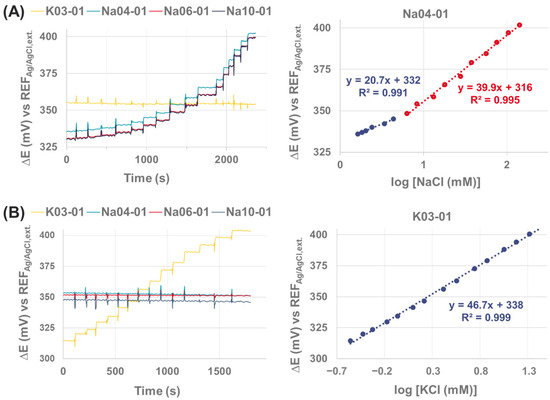Abstract
The WAIT4 (Welfare: Artificial Intelligence and new Technologies for Tracking Key Indicator Traits in Animals Facing Challenges of the Agro-ecological Transition) project aims to increase research-based capacities to quantify and characterize animal welfare (AW) from the agro-ecological (AE) perspective and to revise farming practices by considering interactions between the animal and its environment. From this perspective, the development of new sensors for assessing the kinetics of physiological variables of interest (Na+, K+, pH) in animals’ interstitial fluid (ISF) by microneedle patches will be a valuable aid for farmers to monitoring AW states and various stressors.
1. Introduction
To guarantee fair and sustainable food production, urgent changes in agricultural systems are required, and the transition to AE farming practices is an important way of achieving this goal. The transition to AE will have a major impact on AW [1]. The strategies to improve AW are dependent on the understanding and precise assessment of traits underlying the physiology, behavior and perception of an animal in fluctuating contexts. Then, the WAIT4 project will develop pattern-mining algorithms combined with machine learning algorithms to extract models from such heterogeneous data and interpret them in relation to AW. However, in order to achieve these purposes, there is a clear need to measure internal physiological factors with smart biosensors, a topic that is of growing interest in human medicine and is an emerging challenge in animal science [2]. In this context, one of the challenges of this project is to develop a minimally invasive device that combines a microneedle patch for interstitial fluid (ISF) extraction with a multi-parameter electrochemical platform for monitoring sodium, potassium and pH. This paper will then report the first promising results of the potentiometric electrochemical detection of Na+ and K+ in artificial ISF.
2. Materials and Methods
Three different ionophores were selected for Na+ detection (sodium ionophore IV, VI and X) and one for K+ (potassium ionophore III). To obtain the Ion-Selective Electrodes (ISEs), the ionophores were mixed with ion exchanger, plasticizer and polymer dissolved in THF. The corresponding formulations are noted as Na04-01, Na06-01, Na10-01 and K03-01. Electrode arrays were made as described in a previous paper [3]. These platforms were composed of 8 working electrodes, and 2 µL of each formulation was drop-casted and let to dry overnight (2 electrodes for each ISE). The measurements were obtained by Open Circuit Potential (OCP) vs. a reference electrode of Ag/AgCl by increasing concentrations of Na and K, respectively, in two different start artificial ISF media at pH 7.4.
3. Discussion
Figure 1 shows the OCP of Na and K tests in electrolyte solutions with physiologically relevant concentrations of 1.8–150 mM Na+ and 0.2–28 mM K+, respectively.

Figure 1.
Electrochemical responses and linearity of (A) Na+ test and (B) K+ test in artificial ISF.
All sodium ISEs show near-Nernstian sensitivities of 39.9/41.3/41.4 mV per decade for Na04-01/Na06-01/Na10-01, respectively, and linearity between 6 and 150 mM of Na+ (Figure 1A). The potassium ISE, K03-01, also shows good selectivity of 46.7 mV per decade and a linearity between 0.2 and 28 mM (Figure 1B). ISEs do not show crossed interferences by the other ion (Table 1).

Table 1.
The table shows the calibration values for each ISE for the Na+ test (a) and K+ test (b).
In this study, we demonstrate that applying our design and the fabrication strategy of this platform enables the detection of multiple parameters involved in animal stress. The next step will be the integration of the electrochemical platform with a pH sensor and microneedle patches to perform measurements of physiological parameters that are minimally invasive for animals.
Author Contributions
Conceptualization, Y.R.J.T., I.S. and C.V.; methodology, Y.R.J.T. and I.S.; validation, Y.R.J.T., I.S. and C.V.; formal analysis, Y.R.J.T. and I.S.; writing—original draft preparation, Y.R.J.T. and I.S.; writing—review and editing, Y.R.J.T.; project administration, C.V. All authors have read and agreed to the published version of the manuscript.
Funding
This research was funded by Agence Nationale de la Recherche under the France 2030 program with the reference ANR-22-PEAE-0008.
Institutional Review Board Statement
Not applicable.
Informed Consent Statement
Not applicable.
Data Availability Statement
The raw data supporting the conclusions of this article will be made available by the authors on request.
Conflicts of Interest
The authors declare no conflict of interest.
References
- Ducos, A.; Douhard, F. Contributions of animal genetics to the agroecological transition of livestock farming systems. INRAE Prod. Anim. 2021, 34, 79e–96e. [Google Scholar]
- Berckmans, D. Precision livestock farming technologies for welfare management in intensive livestock systems. Rev. Sci. Technol. 2014, 33, 189–196. [Google Scholar] [CrossRef] [PubMed]
- Chmayssem, A.; Verplanck, N. Development of a multiparametric (bio)sensing platform for continuous monitoring of stress metabolites. Talanta 2021, 229, 12227. [Google Scholar] [CrossRef] [PubMed]
Disclaimer/Publisher’s Note: The statements, opinions and data contained in all publications are solely those of the individual author(s) and contributor(s) and not of MDPI and/or the editor(s). MDPI and/or the editor(s) disclaim responsibility for any injury to people or property resulting from any ideas, methods, instructions or products referred to in the content. |
© 2024 by the authors. Licensee MDPI, Basel, Switzerland. This article is an open access article distributed under the terms and conditions of the Creative Commons Attribution (CC BY) license (https://creativecommons.org/licenses/by/4.0/).